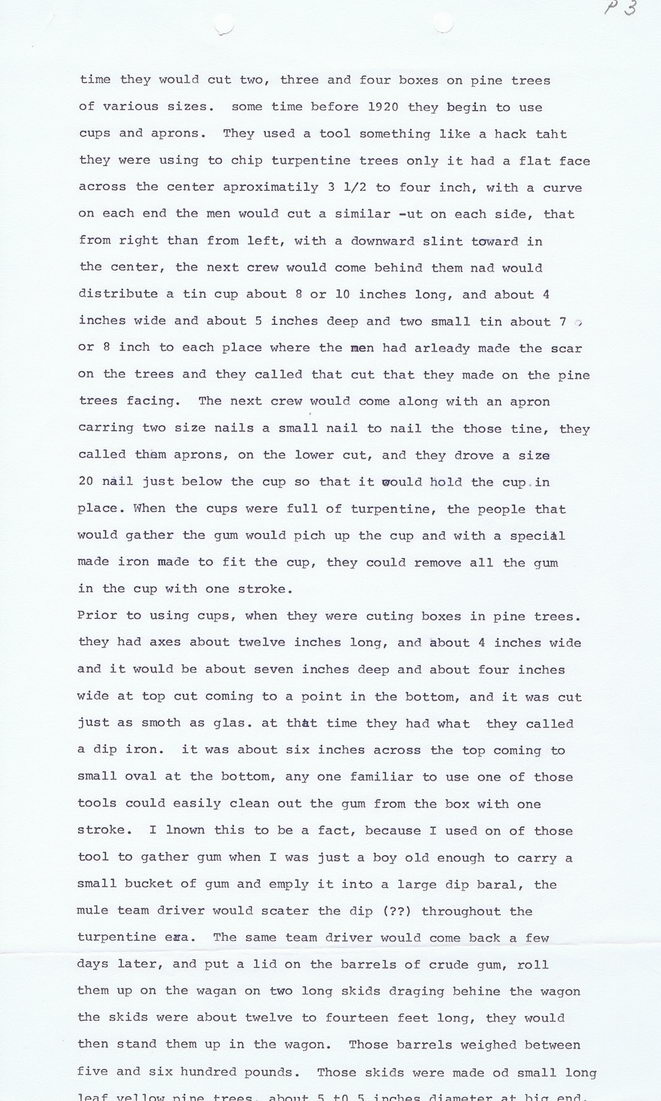This text was obtained via automated optical character recognition.
It has not been edited and may therefore contain several errors.
time they would cut two, three and four boxes on pine trees of various sizes. some time before 1920 they begin to use cups and aprons. They used a tool something like a hack taht they were using to chip turpentine trees only it had a flat face across the center aproximatily 3 1/2 to four inch, with a curve on each end the men would cut a similar -ut on each side, that from right than from left, with a downward slint toward in the center, the next crew would come behind them nad would distribute a tin cup about 8 or 10 inches long, and about 4 inches wide and about 5 inches deep and two small tin about 7 > or 8 inch to each place where the men had arleady made the scar on the trees and they called that cut that they made on the pine trees facing. The next crew would come along with an apron earring two size nails a small nail to nail the those tine, they called them aprons, on the lower cut, and they drove a size 20 nail just below the cup so that it tfrould hold the cup.in place. When the cups were full of turpentine, the people that would gather the gum would pich up the cup and with a speciAl made iron made to fit the cup, they could remove all the gum in the cup with one stroke. Prior to using cups, when they were cuting boxes in pine trees, they had axes about twelve inches long, and about 4 inches wide and it would be about seven inches deep and about four inches wide at top cut coming to a point in the bottom, and it was cut just as smoth as glas. at th&t time they had what they called a dip iron. it was about six inches across the top coming to small oval at the bottom, any one familiar to use one of those tools could easily clean out the gum from the box with one stroke. I lnown this to be a fact, because I used on of those tool to gather gum when I was just a boy old enough to carry a small bucket of gum and emply it into a large dip baral, the mule team driver would seater the dip (??) throughout the turpentine eara. The same team driver would come back a few days later, and put a lid on the barrels of crude gum, roll them up on the wagan on two long skids draging behine the wagon the skids were about twelve to fourteen feet long, they would then stand them up in the wagon. Those barrels weighed between five and six hundred pounds. Those skids were made od small long 1 pa -f \;p1 1 ot*t ni no +? roo e . a hnn 4- R f O R i nphoo rJ -5 amo4*o r* ^ +- V?irr <=?n r? .

Moran, Sylvester G. Sylvester-Moran-Family-part3